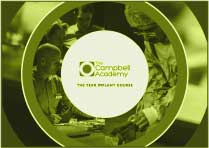
The other day I did quite a big implant case in surgery, 2 implants placed in the upper left 5 and upper right 4 areas, the upper right 4 required an extraction of a small piece of root during the surgical procedure.
The patient is missing upper left 2 all the way to upper right 4 and has recently had upper right 3 extracted due to disease.
And so, in this case we planned to put 3 implants in the upper anterior region but the bone was not thick enough so the patient needed a block bone graft.
For this we have many choices of what we can use, including bone materials off the shelf or patients own bone from chin or ramus (back of the lower jaw) or even hip or even skull.
The implants that went in; in the upper arch could have been one of at least 5 different designs depending upon the circumstances and what we decided to do. The bone material that we then used to cover the block bone craft, that we use in order to stop it absorbing quickly could have been of a hundred or a thousand different kinds and the membrane that we used on top of that is the same again.
There are many options for the technique used and sutures that we use to close up at the end, the choices there are almost infinite.
We also had to choose whether we would give the patient antibiotic therapy and/or steroids and what type of pain relief to use and all of that stuff before deciding what temporary restoration to have and then deciding what materials to use in the restorative phase of treatment when the patient returns.
So, in general there is no way to decide how to do this and it’s far too complex and no one should ever start to decide how to go ahead providing implant treatment for their own patients because the choices are almost infinite and you’ll never learn how to do it.
There is though the possibility of starting with first things first.
The other day might have been the 6,000th dental implant I’ve placed but I can still tell you the name of the first one.
If you’re interested in implant dentistry and haven’t yet begun, it’s not too late and the way the world is changing in dentistry (and will continue to change rapidly) many more people will look towards adding this type of treatment option to their own kit-bag for patients.
The difficulty is that many of the people who would show you how to do this want to show you everything all at once, with a million different options of unmanageable complexity, which you are unlikely ever to grasp and therefore would probably run away from providing any treatment at all.
Shall we start with first things first?
If you actually learn to walk before you try to walk a little bit faster, then you’ll find that implant dentistry is not only rewarding and inspiring but something that you can start to hang your hat on more and more, in a society where people think that it is valuable.
The first phase takes about 5 years we reckon and it starts with a year-long course and our Year Implant Course cohort 2 for 2021 starts here.
Shout if you’re interested.
Blog Post Number - 2728





Leave a comment